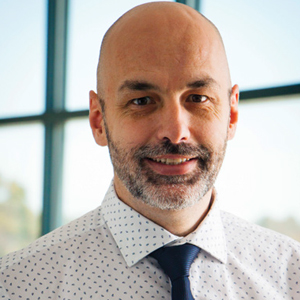THANK YOU FOR SUBSCRIBING

DevOps: A Culture of Workplace Collaboration
Diny Huang, Program Manager & Carlos Elena-Lenz, Principal Technology Strategist, and frog


Diny Huang, Program Manager & Carlos Elena-Lenz, Principal Technology Strategist,
The daily drudgery in the workplace often involves seemingly insurmountable frustrations—from inefficient workflows to repetitive tasks. How many hours of your day do you spend checking emails or following up on instant messages sent from your coworkers, instead of doing your work? The future of work should not continue on this path. There is a future, already taking shape today, in which an army of virtual assistants or software agents at your command will help streamline your workday through automated software that helps you do your job and collaborate effectively with your colleagues. This future is called DevOps.
“DevOps fosters a culture focused on working smarter—not harder”
Although DevOps comes from the software development world, it is relevant to any organization in which barriers between people, and a culture of finger-pointing, are leading to failure. The solution to these problems is strong collaboration between integrated teams using software automation—which business leaders from any industry can reference—that produce higher-quality work through improvements in culture and workflows. This past spring, frog had the opportunity to interview and learn from software teams at leading enterprise software companies to understand how they ensure a positive and productive work environment. What we found was that these companies see DevOps as critical to helping them succeed, and they are not alone. According to one study, organizations increase business revenue by around 20 percent as a result of DevOps implementation. Specific implementation strategies vary among companies, but successful organizations have three key cultural commitments in common: shared work ownership, collaboration early and often, and a tech-forward mind-set.
At its core, DevOps fosters a culture focused on working smarter—not harder. Building complex software requires a range of specialists, and the
Often, a software tool or process is introduced to fix or address a problem, while the underlying broken work culture stays the same. As Ken pointed out, “People problems become real technical problems.” The solution is a strong culture of collaboration, in which tools support people by integrating communication and streamlining the exchange of work with their colleagues. In our research, successful organizations established a supportive culture with buy-in from employees in leadership roles. Large organizations especially needed leaders who rejected pointing fingers and supported innovation. This is by no means an easy thing to do. Organizational culture can take years to change, and in many cases companies need to start small and implement by example. That said, it often takes just one team to demonstrate a successful approach before others start wanting to adopt it.
In addition to a focus on culture, an organization must foster technology as a core capability that enables the business to constantly improve. According to the authors of “The Phoenix Project: A Novel about IT, DevOps, and Helping Your Business Win,” companies must also manage technical debt that “comes from taking shortcuts, which may make sense in the short-term. But like financial debt, the compounding interest costs grow over time.” The authors go on to say, “If an organization doesn’t pay down its technical debt, every calorie in the organization can be spent just paying interest, in the form of unplanned work (i.e., fighting fires).” Managing dysfunctional or out-of-date tools is critical, but businesses cannot expect years of poorly patched software to go away overnight. The debt accumulated has to be paid down over time, through appropriate investment in people, time, and culture.
An engineer we spoke to in the course of our research told us that DevOps was “an inability to leave things broken.” It is time for companies to start finding the broken elements within their organizational cultures and technology systems and begin developing a people-first mentality as they pursue solutions. Instead of constantly fighting inefficiency fires in a reactive manner, organizational leaders and managers need to think proactively: to step back, turn around, and develop a new path into the future.
See More: Top Collaboration Technology Companies in APACWeekly Brief
I agree We use cookies on this website to enhance your user experience. By clicking any link on this page you are giving your consent for us to set cookies. More info
Read Also













